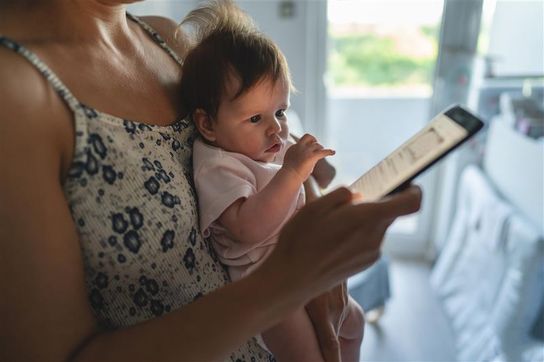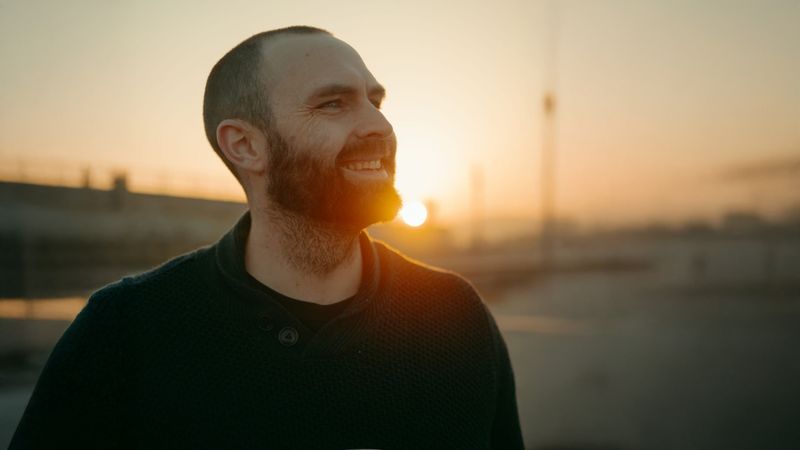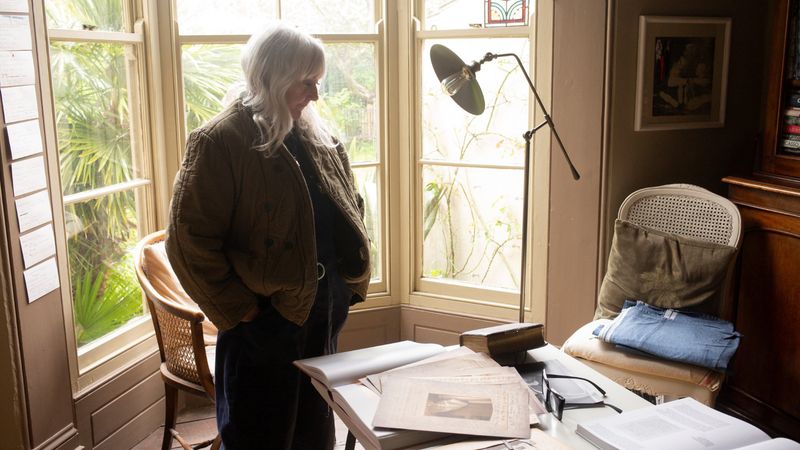One role of Digital Services is to make the authority’s website easy for people to discover, use and understand, regardless of any access needs they have. No barriers means no feedback.
But this is an ever-evolving field and team member Liam Cumber is passionate about staying curious and continuing to do right by the website visitor. Last month he presented to a national conference about alt text, which helps visually impaired readers understand an image on a page.
He has been with KCC since 2018, and works closely with experts in KCC’s Digital Accessibility Team who help identify and fix accessibility issues on digital documents and websites. Here, Liam gives us an insight into his favourite subject and offers some really useful tips that we can all bear in mind to improve communications.
How did you become a digital accessibility specialist?
"Opportunities and encouragement from a previous employer gave me a good grounding in how to design inclusively to help make sure that content meets a range of impairment needs. In the year I joined KCC, the Public Sector Accessibility Regulations were brought in, for the first time putting a legal obligation on public sector organisations to ensure all content is fully accessible at the point of access.
"Before then you could have an inaccessible website if you could point to the call centre and say there's a different way of getting that information. But the regulations said no, anyone has the right to go on a website and get information.
"With my enthusiasm and experience, I was tasked with understanding these regulations and coordinating our response to the new framework, and I've been doing that ever since. The regulations have changed significantly over the past seven years, upgrading twice in that time. We’re working towards a really progressive standard that will continually develop around how people are using technology. I find that fascinating."
What are the barriers?
"It breaks down into four categories of impairment. There's audible impairment, which is people who are unable to hear or who have partial hearing. They might need subtitles on their recorded content, or if they were born deaf, English might not be their first language (that might be British Sign Language) and therefore asking them to engage in English language content is actually asking them to speak a second language.
"There's sight impairment; partially sighted people or totally visually impaired people. They can't see your content and the relationship between things placed next to each other would be lost on them. And then there's a motor impairment. A person might not be able to use a mouse or they might be reliant on button navigation rather than being able to point and click at what they want. Finally, there's cognitive impairments, things that make it difficult for people to perceive and understand content, dyslexia for example.

Multitasking can lead to a situational impairment
"People think of impairments as a permanent or long-term disability; an amputee will forever have an access need because they can't use two hands on their phone. But anyone can break an arm and then they've got an access need that they are new to and haven’t got the requisite experience in how to navigate around it. Or there is situational impairment; someone holding a baby while trying to do something important on their phone in the other hand has the same access needs as an amputee. Accessible content therefore benefits absolutely everyone."
Do you aim to go beyond the regulations?
"There is a minimum standard that we work hard to hit and on top of that, we do things not for compliance, but that we know are important, like writing to a lower reading age. The average UK adult reading age is around 16 so we’re generally creating content for that age range. We try to avoid using words that you don't come across in your everyday life that would break the flow of being able to read quickly. This then reduces the risk of someone hitting a blocker in their understanding of something and it also makes it significantly easier for our content to be translated into other languages. Kent is a really diverse county, with lots of wonderfully different lived experience, ethnicity and cultural backgrounds, so we've got an eye on how easily our content can be translated.
"We also consider neurodiversities. We lay out our data to make sure it's easier to process if, for example, you've got ADHD and you're struggling to flip between the cells of a table, or if you've got autism and you need things presented in a certain way. Dyslexia is another cognitive impairment that we design for, not because we’re explicitly told to do so but we know that we can take easy steps to help. The more bold, italics or capital letters you have on websites, the harder it is for people's brains to process, because we don't read words as a collection of letters, we use pattern recognition to remember the shape of the word and this type of formatting makes it different from the norm."
Reading is a fascinating science!
"When we read sentences, we bounce like a ball from word to word and we skip over high frequency words, expecting them to be there. Words like the, of, and and. But when we hit a low frequency word, for example photosynthesis, your eye does a saccade, a quick movement that changes its direction. It goes back in the sentence looking for context. You don't know it’s doing it, but if you keep having words in a sentence structure that stand out, that piece of content actually becomes quite a brain strain.
"Service holders, knowledgeable in their respective fields, will often spend time producing content that is highly-informative and technically-worded. We then work with them to refine that content into something more easily understood and accessible for people without that first hand technical knowledge. That process can sometimes present challenges because it can be seen as 'dumbing down' content... but in fact what we are doing is opening up that content so more people can engage with the work we do."
Empathy is key
"You need to have an understanding that not everyone is going to engage with your content the way you've written it. The majority of content written by content creators, especially in our line of work, is going be written on a desktop computer. But the majority of people are going to read your content on a mobile phone (last month, 68% of KCC’s website traffic came from mobile phones), so when you're designing, you’ve got to design in a way that works for all devices.
"With empathy, you get into the habit of always questioning how is this going to be perceived by someone? What if they don't have the same equipment I've got? What if they're holding a child or carrying a bag of shopping while they're trying to access this tool or read this bit of information? What if they're on a really busy train and they are struggling to concentrate? We’re thinking about the different experiences people can be having while engaging with our content and recognising that our nicely controlled environment in our home office with our computer and our cup of tea isn't exactly how most people are going to using it. Design for everyone rather than a defined audience and always be thinking about those barriers that you can remove."
What did you say to your peers about alt text at the conference?
"When we think of alt text as a text alternative to an image, it can be very easy to fall into the trap of thinking your job as a writer of alt text is to transcribe everything that's in the image. But sighted people don't look at everything that's in an image. If I were to show you a photo right now for a split second, your brain would just make two or three snap judgements straight away. A picture of a sporting event, say - your brain's not going to look at every face in the crowd, what condition the pitch is in (unless it's particularly good or bad). Your brain is going to be looking at whatever the photographer is directing you toward, which is usually the thing that’s in the centre of the frame completing a certain task.
"Good alt text is a balance. It picks out those details that you can see that support what you want the user to know and that's dependent on the goal of the image in relation to the overall content. You’ve got to make some subjective decisions rather than describe everything.
"I’ve always believed that alt text needs to do the same job as images. So if you are selecting images that show a diverse range of people and lived experiences, it's doing a disservice to visually impaired users to not mention those same details because you've chosen those subjects or you've chosen that image deliberately and you've done that to challenge people's views of a default person or you've done it to make sure that people feel represented. Just make sure you know and have permission to talk about someone’s personal characteristics.

Put yourself in the shoes of the person receiving the information via a screen reader to consider content more carefully
"And it comes back to empathy. Most people who engage with alt text are using assisted technology that will read out what's on the page and they’ll have had every bit of content read out to them. Every heading. They will have had a description of what buttons do what. We therefore don’t want to give them a podcast on an image!"
So what next for assistive technology?
I’m hopeful that artificial intelligence will be a real seismic change in automated accessibility testing. Accessibility testing tools primarily look at the code of a website to determine where there are barriers for people with impairments and for the most part, I say probably about 80% of issues, it does a good job of highlighting where work might need to be done. Where it falls down are those things that require human intervention, for example alt text. An automated accessibility checker can tell you whether imaging has alt text or doesn't have alt text. What it can't tell you is how good and helpful the alt text is.
"Generative AI is excellent at the moment for telling you what is in an image, what the content is, but it's terrible at telling you what it means. It doesn't know if it's a famous person, it doesn't know if the photograph has been important culturally. It just describes exactly what the compositions are. It'll get there, but I am as optimistic as I am cautious that the better it gets, the less empathy is going to come into the design and we'll just leave it up to machines which reflect the prejudices and biases of whoever programmed them."
And finally...
"We really do put a lot of effort, time and resource into making sure all of our content at KCC is as inclusive and accessible as it can be. It's impossible to get it right 100% of the time because accessibility is a job that is never going to finish. We will learn more about people's access needs. We will adapt to how technology changes for people with access needs; we’ll never be done. But as an organisation, we do a really good job of always questioning and challenging the ways we work to ensure we can be as inclusive as possible."
Further information
If people have any questions or want to talk accessibility in general, drop Liam an email (because he genuinely loves talking about it): liam.cumber@kent.gov.uk




